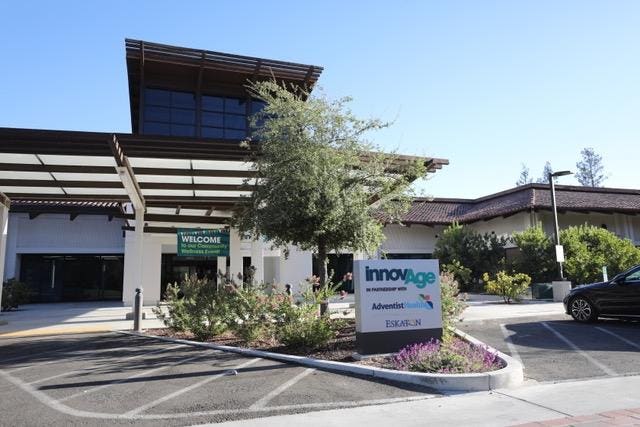The Program of All-inclusive Care for the Elderly (PACE) is a comprehensive healthcare and social services model designed to support frail, older adults in remaining within their communities, avoiding the need for nursing home placement. PACE participants, typically eligible for both Medicare and Medicaid, receive a wide range of services, from medical care and therapy to social activities and transportation assistance. This holistic approach addresses not only physical health but also the social and emotional well-being of participants, empowering them to age with dignity and autonomy. One organization at the forefront of PACE implementation is InnovAge, a publicly traded company dedicated to expanding PACE services nationwide. InnovAge operates numerous PACE centers, each designed to provide a comfortable and stimulating environment where participants can engage in activities, receive medical attention, and access essential support services.
A visit to the InnovAge PACE center in Sacramento reveals the program’s practical application and impact. A fleet of specially equipped buses transports participants from their homes to the center, ensuring accessibility and convenience. The center itself is thoughtfully designed, featuring a circular layout that minimizes confusion for individuals with dementia. Various activity rooms cater to different interests, from games and entertainment to therapeutic exercises and spiritual gatherings. On-site medical, dental, and therapy services streamline healthcare access, while social workers assist with administrative tasks, alleviating the burden on participants. This comprehensive approach ensures that all aspects of a participant’s well-being are considered and addressed.
The core of PACE’s effectiveness lies in its interdisciplinary team approach. Each participant is assigned a team of healthcare professionals, including physicians, nurses, therapists, and social workers, who collaboratively develop a personalized care plan. This plan encompasses medical care, social support, therapy, dietary guidance, and other services tailored to the individual’s specific needs. This personalized approach ensures that care is not only comprehensive but also relevant and effective in promoting independence and overall well-being. The substantial investment in each participant, averaging around $100,000 per year, reflects the commitment to providing high-quality, individualized care. This investment is justified by the positive outcomes achieved, including improved health, enhanced quality of life, and delayed or avoided nursing home placement.
InnovAge’s commitment to PACE goes beyond simply providing services. The organization actively works to empower participants by facilitating a participant advisory committee, ensuring their voices are heard and their preferences are considered in program development and implementation. This participatory approach fosters a sense of ownership and belonging among participants, further enhancing their engagement and satisfaction with the program. Furthermore, InnovAge recognizes the importance of addressing housing instability, a significant barrier for many low-income seniors. While PACE eligibility requires stable housing, InnovAge has formed partnerships with housing providers and even owns senior living facilities in some areas, facilitating access to suitable housing for those who qualify for PACE services.
Despite its demonstrable success, PACE remains relatively unknown, raising the question of why it isn’t more widespread. One significant hurdle is the need for state-level support, particularly regarding Medicaid funding. Each state independently administers Medicaid, and without their participation, PACE programs are financially unsustainable. Securing state buy-in requires advocacy and education to demonstrate the long-term cost-effectiveness and societal benefits of PACE. Another challenge is the initial capital investment required to establish a PACE center and maintain operations until it reaches self-sufficiency. The slow, individual-by-individual enrollment process, coupled with state approval requirements for each participant, can further prolong the time it takes for a new program to become financially viable.
The expansion of PACE hinges on overcoming these challenges. Increased awareness of the program’s benefits among policymakers, healthcare providers, and the public is crucial. Advocacy efforts must focus on demonstrating the long-term cost savings associated with preventing nursing home placements, as well as the positive impact on participants’ quality of life. Streamlining the state approval process and exploring innovative funding models could further facilitate the growth of PACE programs. Ultimately, widespread adoption of PACE requires a collaborative effort involving government agencies, healthcare organizations, and community stakeholders to ensure that this valuable model reaches more seniors in need. The potential of PACE to transform the landscape of elder care is significant, offering a viable and compassionate alternative to institutionalization, allowing older adults to age in place with dignity and independence.

